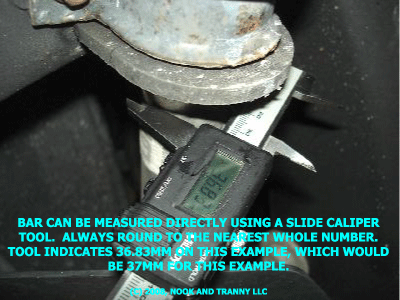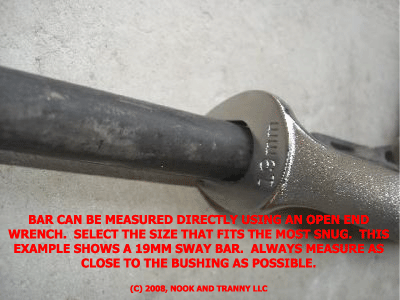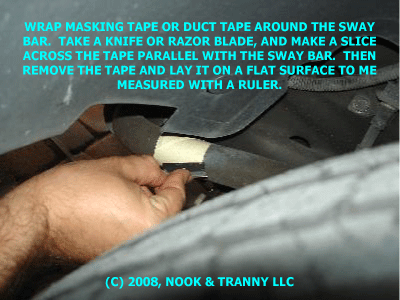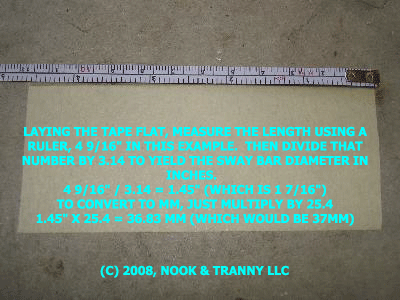
Parts and accessories for Trans Ams, Fieros and Corvettes





 |
||||
Parts and accessories for Trans Ams, Fieros and Corvettes |
||||
 |
 |
 |
 |
 |
HOW TO MEASURE A SWAY BAR (WITH AND WITHOUT TOOLS) |
|
| Always measure your sway bar prior to purchasing bushings. There are several reasons. First, the original sway bar may not be on your vehicle, as it may have been changed. Second, sway bars wear after time, and a severely worn sway bar needs to be replaced. Sway bars with minor wear can have smaller bushings installed. Always measure the sway bar where the bushing rides (if possible), or as close to the bushing as possible. | |
 |
OPTION 1 (MOST ACCURATE METHOD) The most accurate method for measuring a sway bar would be to use a digital caliper or slide rule. |
 |
OPTION 2 (EASIEST) This is a very easy option. Use the smallest wrench you can find. For metric sway bars, go down every 1mm until you find the wrench that fits the snuggest. With SAE sway bars, use standard wrenches and go down every 1/16" of an inch, until you find the wrench that fits the snuggest. |
 |
OPTION 3 (NO TOOL OPTION) This is also accurate, but more difficult to do. Take some masking tape, and run a few rings around the sway bar. Take a knife or blade, and slice the masking tape open, then measure the length of the tape. Take that measurement, and divide by Pi (3.14) to get the diameter of the sway bar. |
 |
|
|
(C) 2021, Nook and Tranny LLC
|